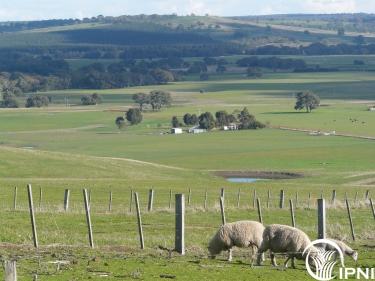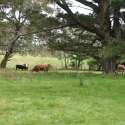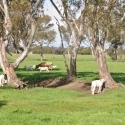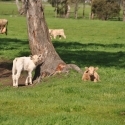08 Oct 2016
1 Pasture and animal production
Potassium for pastures
 Pastures and potassium
Pastures and potassium
Australian research has shown increases in both pasture and livestock production with potassium fertilisation, often associated with an improvement in the legume component of mixed pastures.
On duplex soils in coastal NSW, annual applications of potassium fertiliser have improved the liveweight (LW) gain of weaner steers on mixed pastures (see table). This response was reliant upon seasonal conditions which allowed clover in the pastures to regenerate.
The effect of annual K applications on liveweight gain. (source Proc. First Workshop on Potassium in Aust. Agriculture, 1997)
Year | Steers/ha | Muriate of potash(kg/ha/yr in Years 1,2 and 3) | |||
0 | 42 | 125 | 375 | ||
AverageLW gain(kg/ha) | Additional LW gain in response to K fertiliser(kg/ha) | ||||
1 | 2.5 | 335 | - 8 | - 5 | 108 |
2 | 3.75 | 251 | 60 | 56 | 116 |
3 | 3.75 | 521 | 60 | 150 | 199 |
4 | 3.75 | 390 | 124 | 330 | 210 |
5 | 2.5 | 213 | 95 | 133 | 140 |
6 | 2.5 | 293 | 35 | 80 | 80 |
Total Gain | 366 | 744 | 853 | ||
In Western Australia on a low potassium site, potassium increased production of a mixed pasture. Where stocking rates were adjusted in accordance with improved pasture growth, wool production per hectare increased (see graph).
Greasy wool production with and without annual potassium application ((source CSBP Futurefarm))
This graph illustrates greasy wool production from a Western Australian pasture with and without annual potassium application and at two stocking rates. In 1994, 95 kg K/ha was applied, with a further 30 kg/ha in 1996




